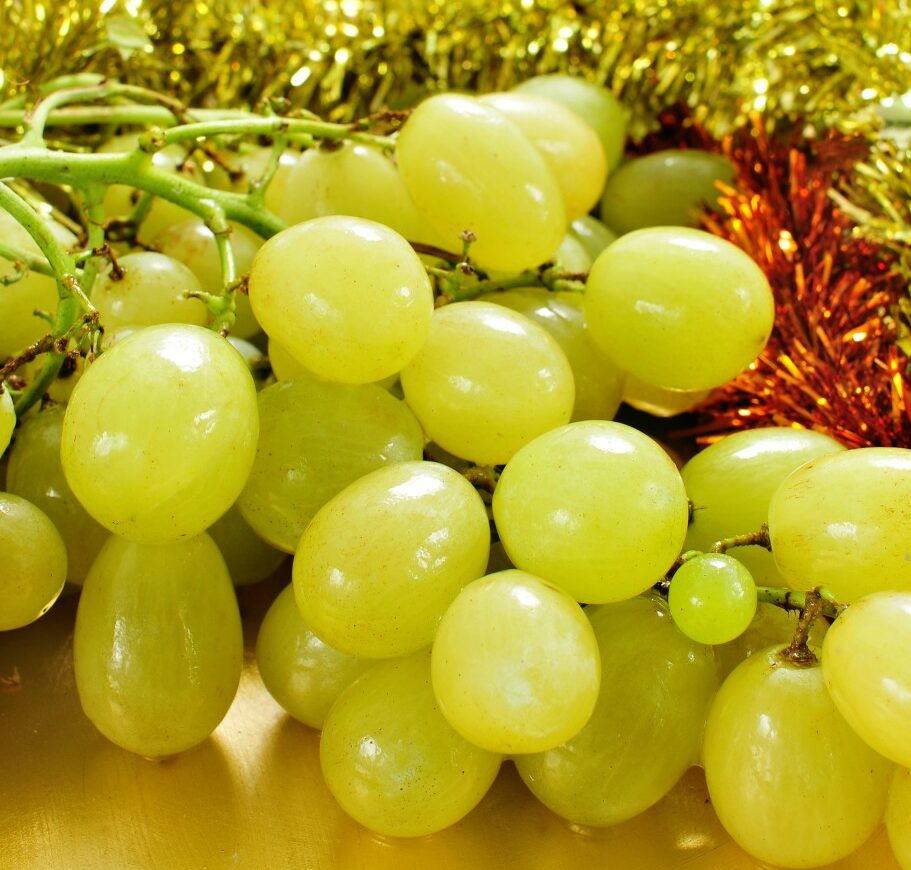Food on New Year’s Eve rhymes with tradition. In Italy, everyone knows, lentils and cotechino, a type of sausage popular especially in the northern regions of the country, are ubiquitous. This is especially because lentils have been considered a symbol of good luck since the times of the Romans, and eating them on the eve of the new year is said to bring money, health and prosperity.
But there are other “Capodanno” habits related to food we Italians enjoy, even if they may not have been “created” by us. It’s the case, for instance, of the tradition of eating twelve grapes at midnight, a well-wishing gesture hailing from the not-so-far Iberic peninsula. The ritual is very simple: at midnight, while you rise your spumante glass, you eat, one by one, dodici acini di uva, twelve single grapes, each for every time the clock chimes. Careful though, because you have to be precise: one grape for one chime, so keep a good rhythm!
When it comes to symbolism, grapes have a lot in common with lentils: they, too, are believed to bring wealth and health for the new year. The association between grapes and prosperity is ancient, as it is well represented by its ubiquitous presence throughout antiquity on the banquets of Emperors, kings, pharaohs and high priests. Grapes were also associated with fertility and abundance, key factors in societies where agriculture was at the heart of wealth and survival.
However, eating grapes on New Year’s Eve is a much more recent tradition, which experts date back either to the end of the 19th or the very beginning of the 20th century. And, as mentioned, while it is widely common in the Belpaese, it wasn’t us that came out with the idea.
According to many, the ritual is closely associated with the Spanish capital, Madrid, and it boils down to… economic reasons. It seems that, in 1909, Alicante’s winegrowers had a particularly abundant vintage and so they came out with the story that eating grapes on New Year’s Eve would bring wealth for the new year: a creative trick to get rid of their agricultural surplus! The thing is that people around the country took a liking to it and they did it again the following year and the one after that. People in Madrid became particularly fond of the tradition and would gather in the square where the Puerta del Sol clock stood (and still stands!) to eat the twelve grapes together.

Some, however, believe the tradition was born earlier, more precisely in 1882, when the mayor of Madrid forbade celebrations in honor of the Three Wise Kings, during the night between the 5th and the 6th of January. On that occasion, people used to get into the streets of the capital to drink wine together and eat grapes. But the people of Madrid, who certainly shared a certain Mediterranean flair and naughty attitude with their Italian cousins, decided to celebrate anyway but a week earlier, on the night they rang in the new year.
There is, however, one last theory, lesser-known perhaps, but that would connect directly Italy – more precisely, the region of Marche – with the grapes-eating tradition. In Le Marche the habit of eating twelve grapes on New Year’s Eve has always been very common, much more than in the rest of the country, where it was imported in more recent times from Spain. Some historians say that, likely, it developed in the region as early as the mid-16th century, when the area was a cultural melting pot of people, from Spanish Sephardic Jews to others coming from Rome; from Muslims coming from the Ottoman Empire to locals. It is, apparently, in this multicultural atmosphere that the ancient connection between grapes, abundance and good luck became popular again, making Le Marche, perhaps, the place where the uva de suerte was truly born!






























